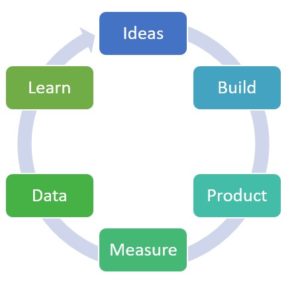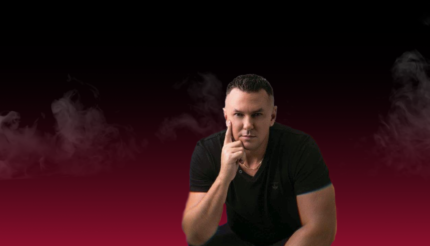“What if we found ourselves building something that nobody wanted? In that case what did it matter if we did it on time and on budget?”
But that’s the future. Joe’s question at the moment is HOW? “I’ve run businesses but had no formal business training,” he observes. “I’ve limited resources, limited time and need to work out how to fund the concept,” he says with a slight edge in his voice. spent a fascinating few hours recently talking on a 1-2-1 basis with a business owner who is looking to embark on an ambitious start up. We’ll call him Joe. Joe’s purpose is powerful. He has a very emotional backstory. It is what drives him. It is why he is willing to take risks. It is why he is prepared to be the disruptor. And I believe it is why he will be successful. And when he is, he may just have changed an industry.
It’s a familiar place for many and reminded me of some of my start-up experiences. And that brought me to re-read Eric Ries’ book ‘The Lean Startup’. Ries is a serial entrepreneur, speaker, adviser and entrepreneur-in-residence at Harvard Business School.
There’s always excitement and risk in a new business venture. I mentioned in an earlier blog (https://bit.ly/2me0o2y) that in the UK, 80% of start-ups go under in 5 years, and a further 80% don’t see 10 years. That means that of every 100 businesses started this year, only 4 will be around in 10 years’ time!
But there are ways of minimising this risk according to The Lean Startup. Ries argues that by applying scientific approaches to building and managing a start-up along with how to get a product to market faster, you will drastically improve the likelihood of success.
Testing and measuring is a fundamental discipline in business, yet one that I so often see ignored. Ries teaches that to bring a product to market, it is invaluable to test it at every stage of the journey so that time and money is not wasted. After all, these are both in short supply in a start-up. Sounds obvious, so how do you do it?
The good news is that Ries shows how in his book – he has created science where there was once only art. And he has done this in 3 phases – Vision, Steer, Accelerate.
Validating the Vision – Wash, Rinse, Repeat
A clear, validated vision has the best chance of succeeding. Vision means you know where you are going, but what does ‘validated’ mean? Well, Ries emphasises that entrepreneurs should be experimenting while building the product, and not trying to develop the ‘perfect’ product and then release it. The risk that by doing the latter is that whilst it might be perfect to them, it’s the market that will decide if there is a place for it or not. So take your vision, break it down and test each smaller piece. Work out what works and what needs to be improved, and then go again.
Ries goes into detail about how to achieve this and testing while developing/designing/producing means the product is continually being refined based on feedback from your market.
Steer – the feedback loop
Now you know where you are going and how to get there, Ries teaches us how to steer our plans for the greatest likelihood of success. He explains his “build-measure-learn” feedback loop in detail and illustrates it in the following model:

By following this loop, we learn how to ‘pivot’, in other words when to change things, and when to keep going.
You may be familiar with the term minimum viable product (MVP) – this is where you start – build your MVP, get feedback fast, review the feedback to improve the product and go again. Do this quickly and well and you will create a viable product and minimise the amount of time and money spent on getting it to market – in other words you’ll have built a lean start up.
At this point I was reminded of an example in Nassim Nicholas Taleb’s excellent book ‘Antifragile: things that gain from Disorder’. It’s a tough and worthwhile read, in which Taleb argues (successfully in my view) that in order to get stronger, things need to be ‘antifragile’. Things that are fragile break under stresses, but when systems are antifrailge, they are designed to weather volatility, randomness and stresses, and let’s face it, what start-up doesn’t face these conditions.
Consider the Hydra, a monster in Greek mythology with numerous heads. Whenever one head was chopped off, two would grow back. That is the essence of antifragility: something that likes a certain type of harm and even thrives because of it.
Ries’ approach is to encourage entrepreneurs to accept and manage risks by designing systems that are antifragile, and to do it in a way that takes feedback (our learnings) and builds strength from it.
Accelerate – ‘the only way to win is to learn faster than anyone else’
Or as one of my bosses said, ‘Speed kills the competition!’ Once you are pointing in the right direction, it’s time to concentrate on building the organisation, but in a way that it remains lean. Ries teaches us how to plan ‘how to grow’ so that our company remains innovative and agile, can pivot, attract and retain like-minded people and avoid the cancers of lethargy and bureaucracy that blights so many large organisations.
Here Ries delves into many established and proven practices such as Kanban, Kaizen and Just-in-Time to ensure that the business stays lean and innovative and continues to bring validated products to market. The part I loved about this 3rd phase is how Ries teaches us to create companies that create other start-ups within and as part of the company’s normal course of business.
Summary
There’s a lot we can learn and apply from Ries’ principles, especially in the current environment where there is no doubt that lack of innovation kills – not straight away, but slowly and surely (Thomas Cook!)
Silicon Valley knows this– that’s why the most successful companies aim to ‘fail fast and fail early’. They work the cycle of learning what is good, keeping it, getting rid of the bad, and reaping the rewards. They also ensure they can manage a series of ‘little’ shocks as opposed to investing time and effort and money, only to experience one large ‘killer’ shock.
Learning the Lean Startup methods enable entrepreneurs to begin building a proven structure that works. It’s not about throwing something out there and seeing if it sticks or necessarily about saving money or time. It’s a process with methods that are proven to help build a viable product with a waiting market.
A lot of the time the outcomes that we assign to skill were really the result of exercising an option. We do need some intelligence to recognise that an option exists; that’s how trial and error works, using intelligence to interpret data to determine what to keep, what to enhance and what to discard.





